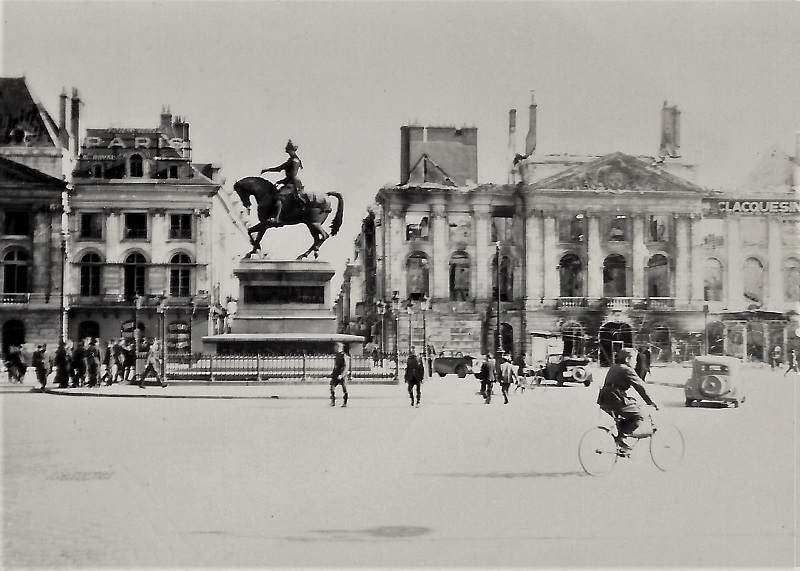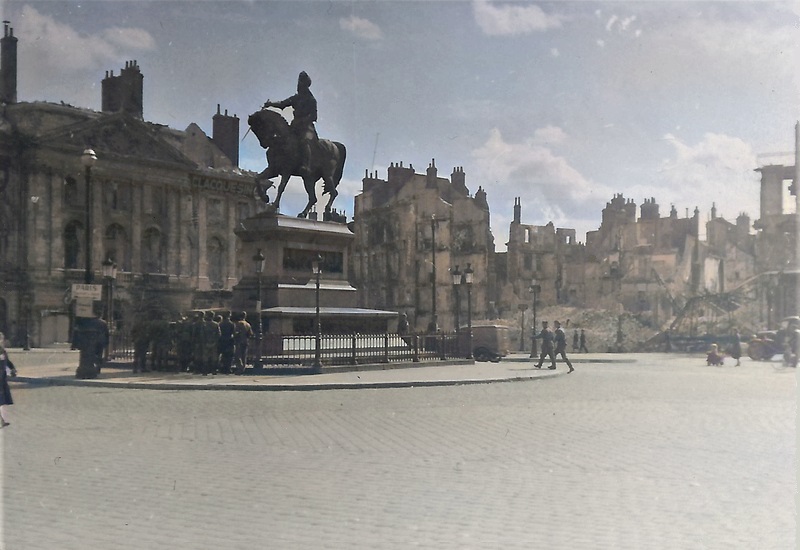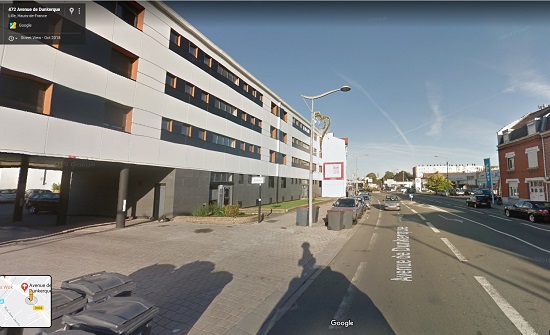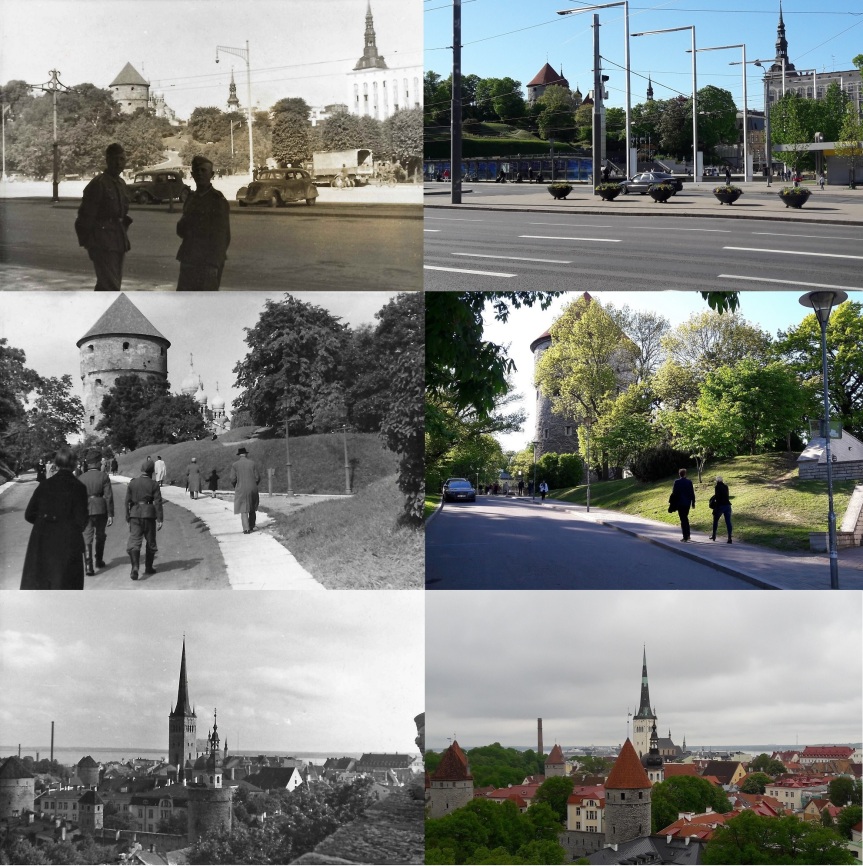Standing alone among the ruins of Orléans, the statue of the 15th century heroine Jeanne d’Arc attract the curious gaze of the German occupiers. The saint couldn’t save France this time, but her value as a symbol would inspire the Free French forces that would return four years later to liberate their country. On 17 June, 1940, the Germans captured Orléans, which would remain under German rule for over four years.

Burnt-out buildings and collapsed ruins line Place du Martroi after the 36 hours of shelling that Orléans had to endure. Unlike Paris, the city wasn’t declared an open city. The goal was to deny the Germans the bridges that cross the river Loire. The bombardment set off fires that ravaged the city, but thanks to favorable winds, the flames didn’t reach some of the most important historical buildings, like the cathedral.

This is what the Place du Martroi looks like today. The buildings which were gutted by fire in 1940 have been restored to their former glory since many years. The bridges which were destroyed in 1940 were rebuilt, only to be bombed to pieces by the Allies in 1944 in preparation of D-Day. Many communication hubs were attacked in order to delay German reinforcements bound for Normandy, and many thousands of French civilians were killed in the raids.

Views like this became all too common all over Europe. In some cases, the sites of destroyed buildings (known as “bomb lots”) didn’t see new houses until the 1970s, and in many towns and cities, surviving buildings still show the pockmarks of bullets and shrapnel, witnesses of the most destructive war ever to ravage Europe.







 472 Avenue de Dunkerque, Lomme, Lille, Hauts-de-France
472 Avenue de Dunkerque, Lomme, Lille, Hauts-de-France